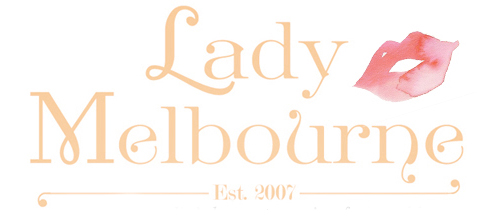Well dear readers, I was so excited by the events of today I actually had to take a nap to come down from the clothes I had been privy to.
Today I had the pleasure of attending The Way We Wear Vintage: Fashion and Textile Fair at Williamstown Town Hall and it lived up to all my expectations of what a fair like this should be like. Lace, vintage patterns, textiles, dresses, gloves, shoes, hats, vanity sets, bags- every thing you could possible imagine in your wildest dreams compiled in one room by some of the best vintage dealers Australia has to offer.
The fair is run by Fiona and Keith Baverstock who organize them Australia wide while they are not busy with their vintage clothing business ‘Seams Old.’
They describe themselves as ‘purveyors of fine antique and vintage clothing, fashion accessories, textiles and fashion art on papter from the eighteenth to the twentieth century,’ and it couldn’t be more accurate.Their collection of true vintage clothing blew me out of the water for its quality, detail and comprehensive coverage of Victorian and Edwardian clothing.These wonderful people are serious about the stories, history and cultural association that clothes hold in society, and I am proud to present to you the following interview with Fiona herself:
LM: Your collection seems extensive, tell me what you mainly look for.
Fiona: Everything from mid 18th Century- Victorian era, through to about 1950. Anything beyond that we wouldn’t really class as true vintage, it would be retro.
Fiona: We do try to buy from overseas a lot. Most of the very old pieces we have come from overseas because the problem we have with vintage Australian clothes is our climate- they just don’t keep very well. I do have a dress from the first fleet to Australia though which is really special.This dress for example, is a satin and Brussels lace wedding gown from around 1899-1900. It came from a family in Rushworth which is gold mining country, and would explain why you would find such an expensive gown in rural, turn of the century Australia. The condition and detailing is superb.
LM: That brings me around to my next question: do you try and find out the story of the clothes when you source them?
Fiona: We do, if there is a story that goes with it all the better. Collectors and dealers love to know the history of a garment, and we think it is important to know who wore the piece and when.Because we understand so much about social history we can understand and decipher a story when there isn’t always one known. For example, we can tell by the cut and quality of the fabric how wealthy the owner may have been, from the detailing and stichting where it was made, which in turn tells us a lot about the social standing that it’s owner may have had. You have to have historical awareness of events throughout the 18th and 19th century when you are looking at clothes that old.

Victorian Scottish bodice, circa 1900
LM: Given that some of your collection is up to 200 years old, do you do any restorative work?
Fiona: No, we don’t do restorations so that when someone purchases a garment it comes complete and intact. Museums for example will not buy restored items, and many collectors want the clothes as close to the original standard as possible.What is interesting to note though, is that you sometimes find repairs and darning on the vey old pieces that would have once been done by its owner. That for instance just adds to the garment’s history, and helps us pinpoint just how old something is. There is a lot you can tell from stitching and thread.
You would think I was exhausted after having a chat with one of Australias leading experts on vintage clothing and accessories, but there was shopping to be done and I wouldn’t be a professional if I hadn’t bought something to show you would I?
Spurred on by Fiona’s words and informative chat about what constitutes real vintage- (‘You just don’t find real vintage pieces at the Salvos’ she told me)- I was quite determined to purchase something I could walk away with feeling satisfied. Searching though a box of mis-matched and damaged pieces, I found this lovely silk gorgette blouse that the lady who sold it to me told me was Edwardian. I don’t know much about Edwardian period clothing, but given that it fitted me, was a very good price and I had already fallen in love; I purchased. The gloves were in a box marked $5, as they were all damaged in some way. As these had so many holes in them she threw them in for free, and who was I to refuse! I’m planning on restoring them to their former glory, so watch this space for their resurrection.












